Immature Molar Apex Case
An 11 year old girl presented in my office with carious exposure of tooth # 36, the mandibular left first molar. The patient had been in pain for four days and described the severity of the pain of as 5 out of 10. The pain was localized to the tooth and was described as sharp, aching, throbbing and shooting. It was equally sensitive to hot and cold stimulus as well as eating and with sweets. The pain was relieved by use of NSAIDs. The tooth sometimes hurt when she bit on it .
Clinical examination revealed A virgin tooth with a deep, discolored occlusal fissure and likely carious exposure. The tooth was sharply responsive to pulp tests.
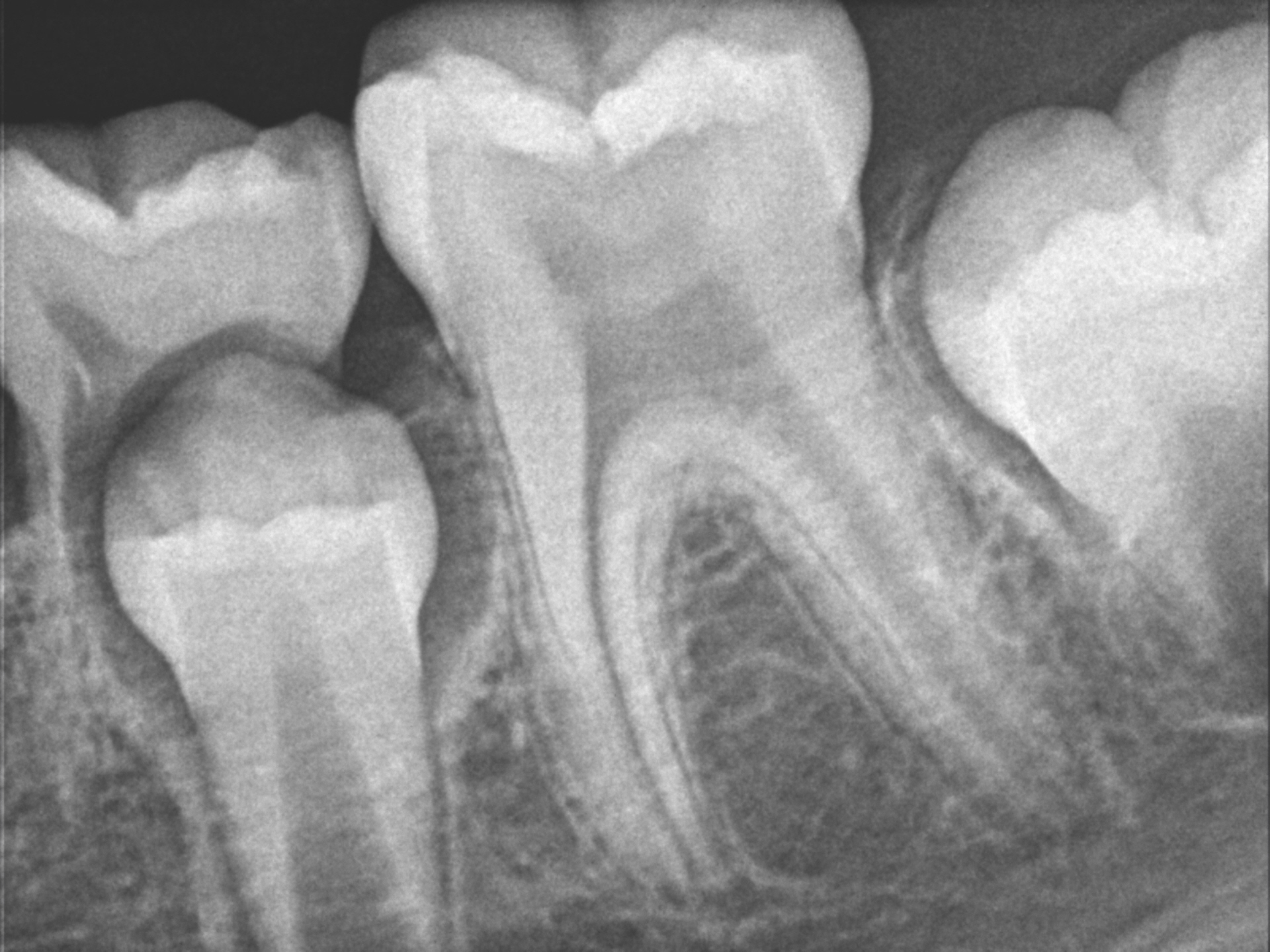
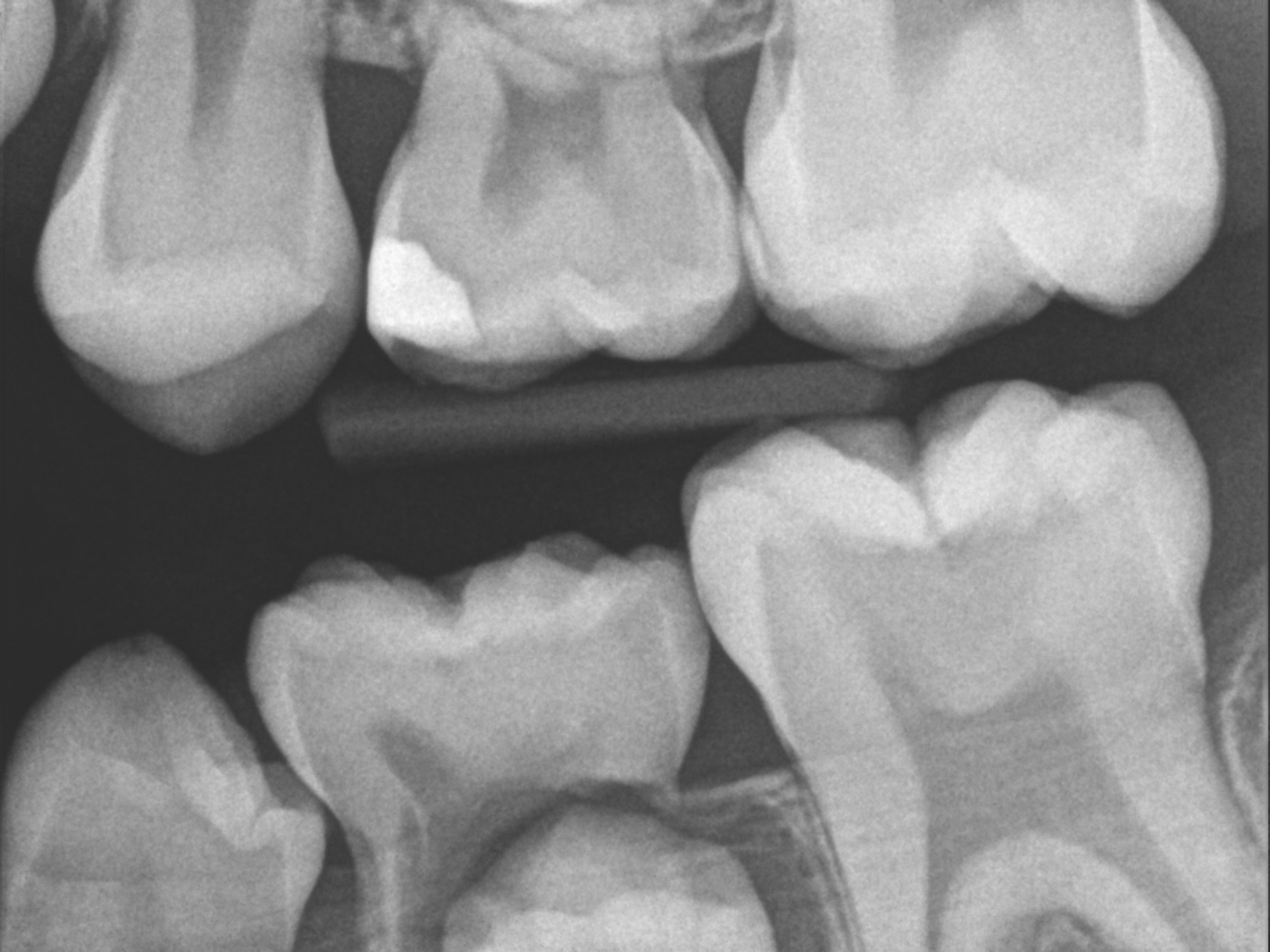

Radiographic examination showed deep caries to the level of the pulp horns and incompletely developed apices.
In situations like this we wish to try to maintain the apical vitality as long as possible to allow for completion of the development of the apical root. A decision was made to perform an MTA pulpotomy in the hope that we could maintain vitality to allow for full root development.
The patient was very cooperative a good mandibular block was achieved. Rubber dam was placed and caries was excavated resulting in a pulp exposure. A deep pulpotomy was performed on the tooth. Bleeding was controlled with the use of H2O2 and pressure over the pulp stumps. Once the pulp had stopped bleeding, MTA putty was placed over the pulp stumps and a tooth was closed with bonded core paste . The patient was placed on follow up recall to assess apical development and whether further endodontic treatment would be required .


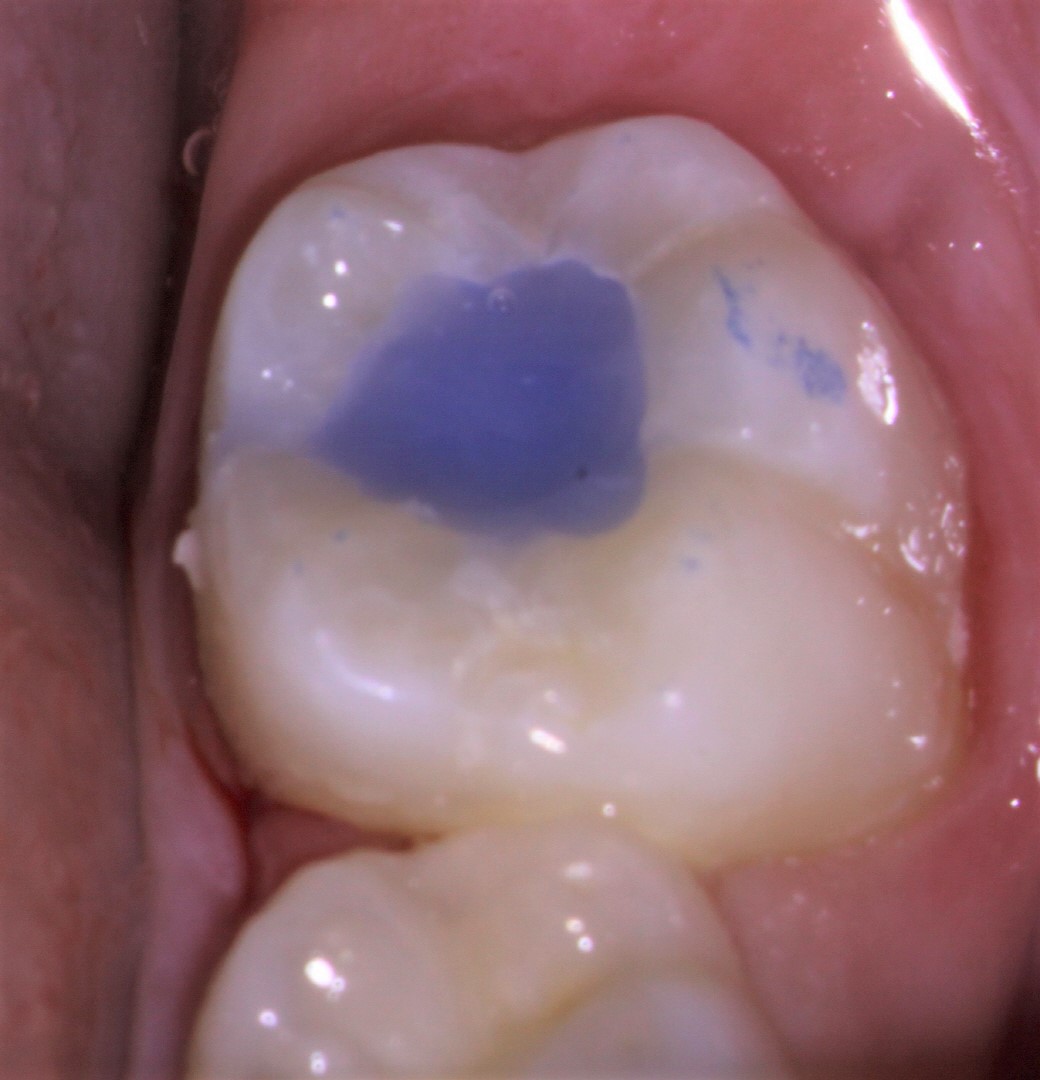
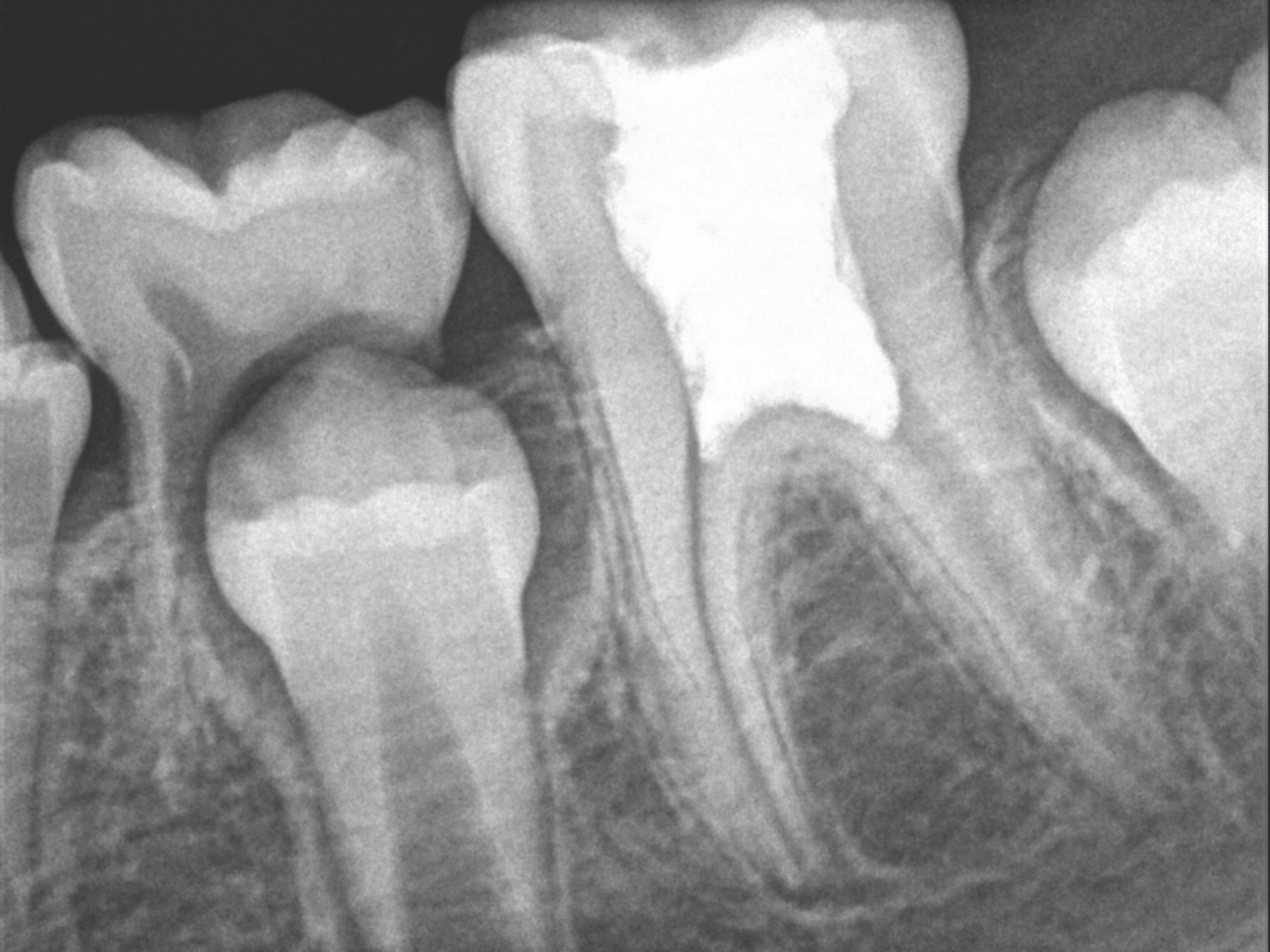
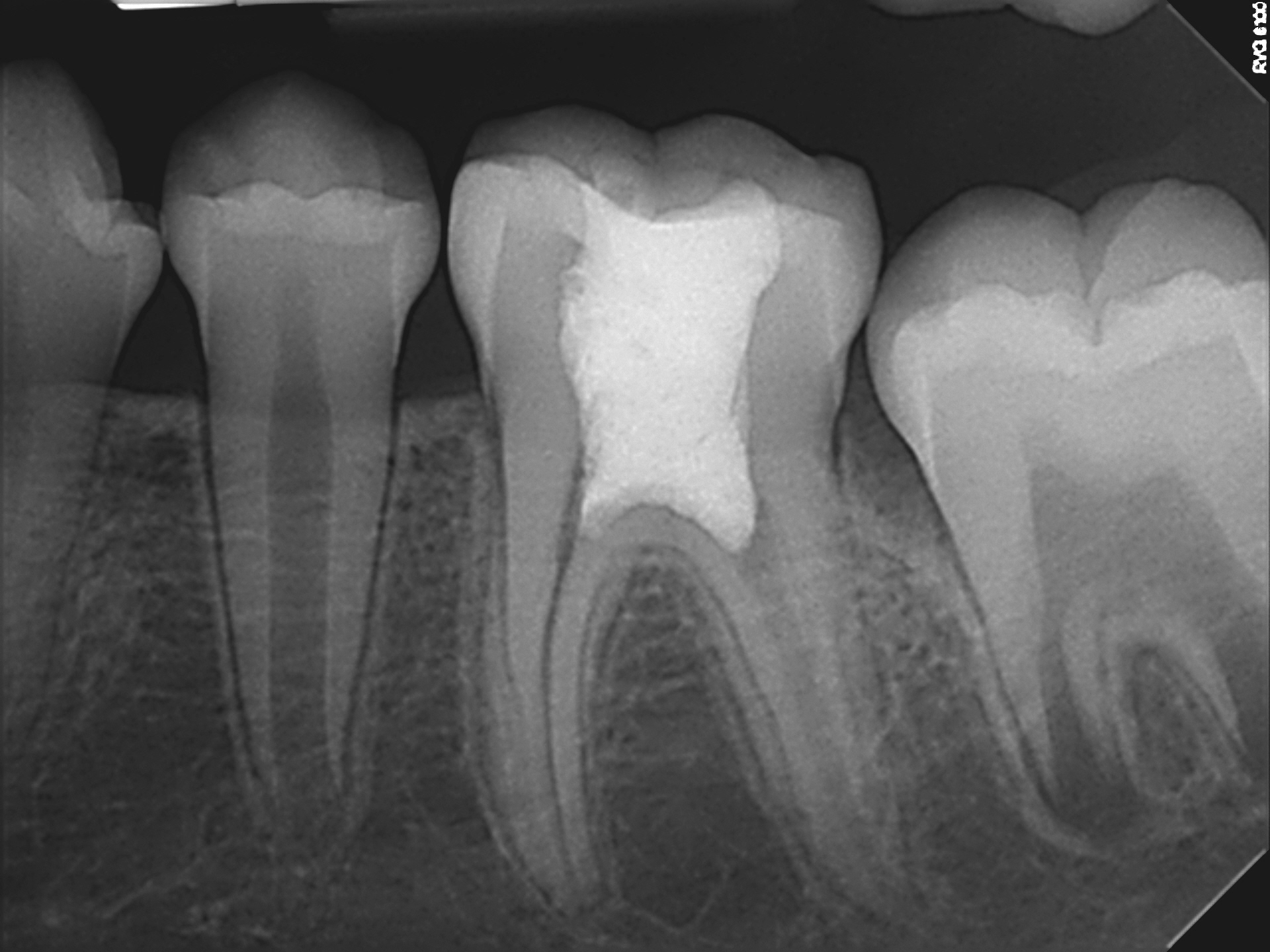
Recall images were taken both at one year and two years post-op . They show complete apical development and the tooth remains completely asymptomatic. I explained to her parents that treatment went extremely well and in the absence of any symptoms or apical pathology I believed that this tooth could be restored with a matching composite restoration and that this may be all that is required to rehabilitate the tooth.


Clinicians presented with this scenario have to be careful not to immediately jump in and extirpate the pulp in its entirety as they would do with conventional Endo treatment. This creates a situation where the apices are large and sometimes difficult to both clean and obturate. This also involves removal of root dentin during the cleaning and shaping of the canal system.
A better option is to try to maintain as much tooth structure as possible, just as we did in this case. Children at this age have an extremely fast healing mechanism and pulps with large, open apices seem to respond extremely well to even such drastic procedures as removal of the coronal pulp. In this case because the apical tissues remained vital and healthy, apical development continued. Both the referral and the patient’s parents were pleased we could perform conservative procedures on the tooth while at the same time relieving the patient’s symptoms.
